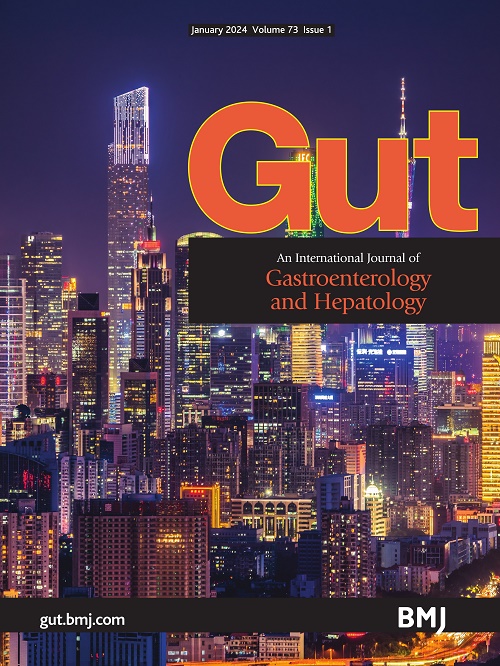EMERALD in the making? A promising blood-based microRNA panel to detect oesophageal adenocarcinoma and Barrett’s oesophagus
IF 23
1区 医学
Q1 GASTROENTEROLOGY & HEPATOLOGY
引用次数: 0
Abstract
Screening for oesophageal adenocarcinoma (OAC), a lethal cancer, when diagnosed after the onset of symptoms, and its sole known precursor, Barrett’s oesophagus (BO), though suggested by guidelines, remains underused.1 Support for screening is underpinned by level 1 evidence demonstrating the ability of endoscopic therapy of BO dysplasia to prevent progression to OAC and the excellent survival of patients with T1 OAC treated with endoscopic therapy.2 While multifactorial, a major obstacle to screening is thought to be the need for endoscopy (which is invasive and expensive with limited access) for BO detection. This has prompted efforts to develop non-endoscopic and non-physician-administered screening tools, which could lead to greater utilisation in practice. To this end, excellent performance characteristics and safety of swallowable cell collection devices+biomarkers in detecting BO (with and without OAC/dysplasia)3 have been reported, leading to the inclusion of this technology as an alternative to endoscopy, in guidelines. In a pragmatic clinical trial, 39% of approached patients expressed interest in this strategy.4 Another study reported that up to 60% of surveyed patients expressed interest in a capsule sponge+biomarker-based test, suggesting additional advantage with minimally invasive technologies.5 To this end, Miyoshi et al report promising results of a six-microRNA (miRNA) panel assayed in peripheral blood samples in detecting the presence …翡翠正在形成?一种有前途的基于血液的微小rna检测食管癌和巴雷特食管
食管腺癌(OAC)是一种致命的癌症,在出现症状后诊断,其唯一已知的前体巴雷特食管(BO),尽管指南建议,但仍未得到充分利用1级证据表明,内窥镜治疗BO发育不良能够防止进展为OAC,并且接受内窥镜治疗的T1 OAC患者的生存率很高,这为筛查提供了支持虽然是多因素的,但筛查的一个主要障碍被认为是需要内窥镜检查(这是侵入性的,昂贵的,进出有限)。这促使人们努力开发非内窥镜和非医生管理的筛查工具,这可能会在实践中得到更大的利用。为此,可吞咽细胞收集装置+生物标志物在检测BO(伴或不伴OAC/不典型增生)3方面的优异性能特征和安全性已被报道,导致该技术作为内窥镜检查的替代方案被纳入指南。在一项实用的临床试验中,39%的患者表示对该策略感兴趣另一项研究报告称,高达60%的受访患者对胶囊海绵+基于生物标志物的检测感兴趣,这表明微创技术具有额外的优势为此,Miyoshi等人报告了在外周血样本中检测存在的六微rna (miRNA)小组的有希望的结果。
本文章由计算机程序翻译,如有差异,请以英文原文为准。
求助全文
约1分钟内获得全文
求助全文
来源期刊

Gut
医学-胃肠肝病学
CiteScore
45.70
自引率
2.40%
发文量
284
审稿时长
1.5 months
期刊介绍:
Gut is a renowned international journal specializing in gastroenterology and hepatology, known for its high-quality clinical research covering the alimentary tract, liver, biliary tree, and pancreas. It offers authoritative and current coverage across all aspects of gastroenterology and hepatology, featuring articles on emerging disease mechanisms and innovative diagnostic and therapeutic approaches authored by leading experts.
As the flagship journal of BMJ's gastroenterology portfolio, Gut is accompanied by two companion journals: Frontline Gastroenterology, focusing on education and practice-oriented papers, and BMJ Open Gastroenterology for open access original research.
 求助内容:
求助内容: 应助结果提醒方式:
应助结果提醒方式:


